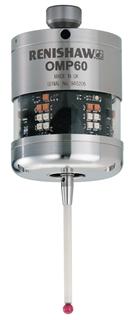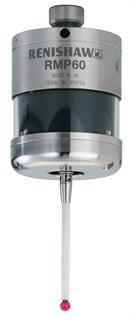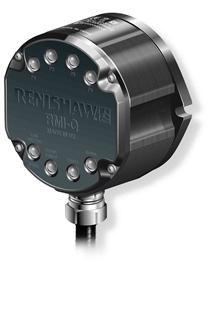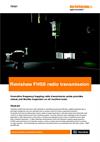Probe transmission technology
Optical transmission systems
Renishaw optical transmission systems use infrared technology to transmit information between the probe and the interface/controller. The probe receives machine control signals and transmits status signals. In operating mode, it transmits probe information, including battery status, to the receiver.
Renishaw systems use modulated optical transmission to reject light interference from external sources and ensure reliable communications.
Optical systems require a clear 'line-of-sight' between the probe and receiver, meaning they are most suited to small/medium machines without complex fixturing.
Typical achievable transmission distance is six metres.
Radio transmission systems
Radio systems use radio waves to transmit signals from the probe to the interface unit. Transmission from Renishaw systems 'hops' between channels within a designated frequency band to avoid interference from surrounding devices. It also incorporates unique identifiers that allow multiple systems to operate in close proximity to each other. Classified as short-range devices, Renishaw radio probes meet the requirements for licence-free operation.
Radio systems do not have the 'line-of-sight' requirements of optical systems, making them ideal for 5-axis machining centres and large machines with complex fixturing assemblies.
Typical achievable tranmission distance is 15 m.
ReniKey
The application of ReniKey is the recommended method for the partnering of multiple RTS/RMPs.
RMI-Q support software (Renishaw part no. A-5687-5000) is available from your local Renishaw distributor/office. This product provides controller specific ReniKey macro cycles for popular CNC machine tool controllers. A generic ReniKey macro cycle is also provided for use with most other CNC machine tool controller types.
For more information on radio transmission, see the Further reading section.







